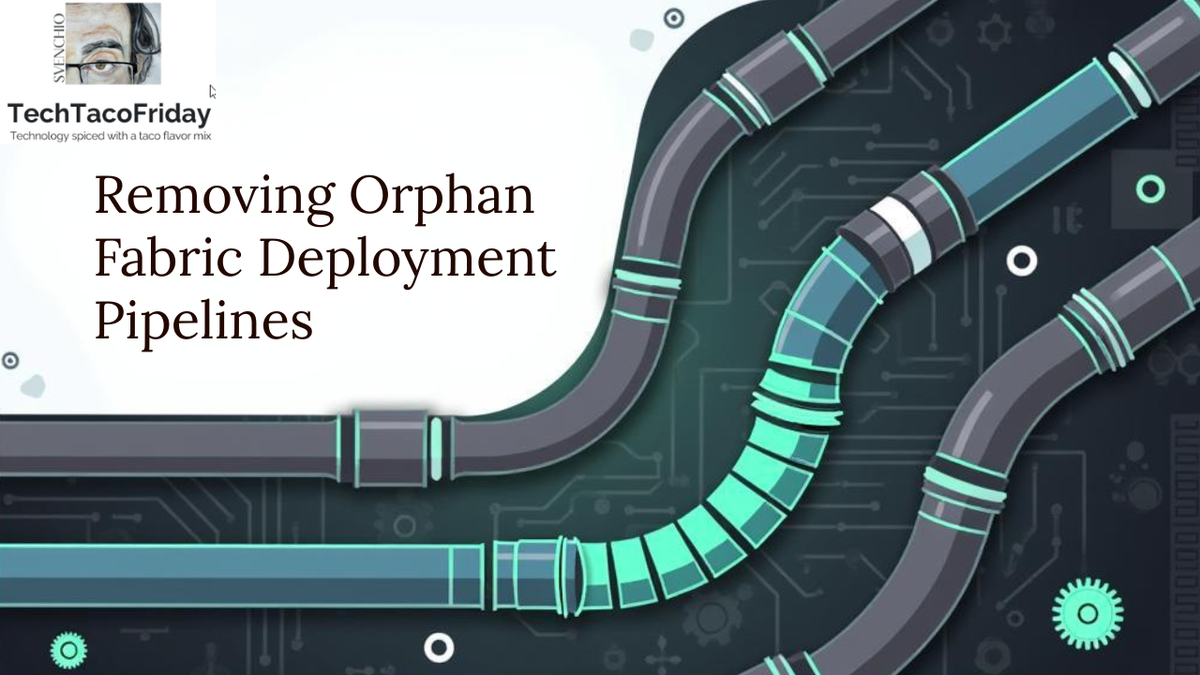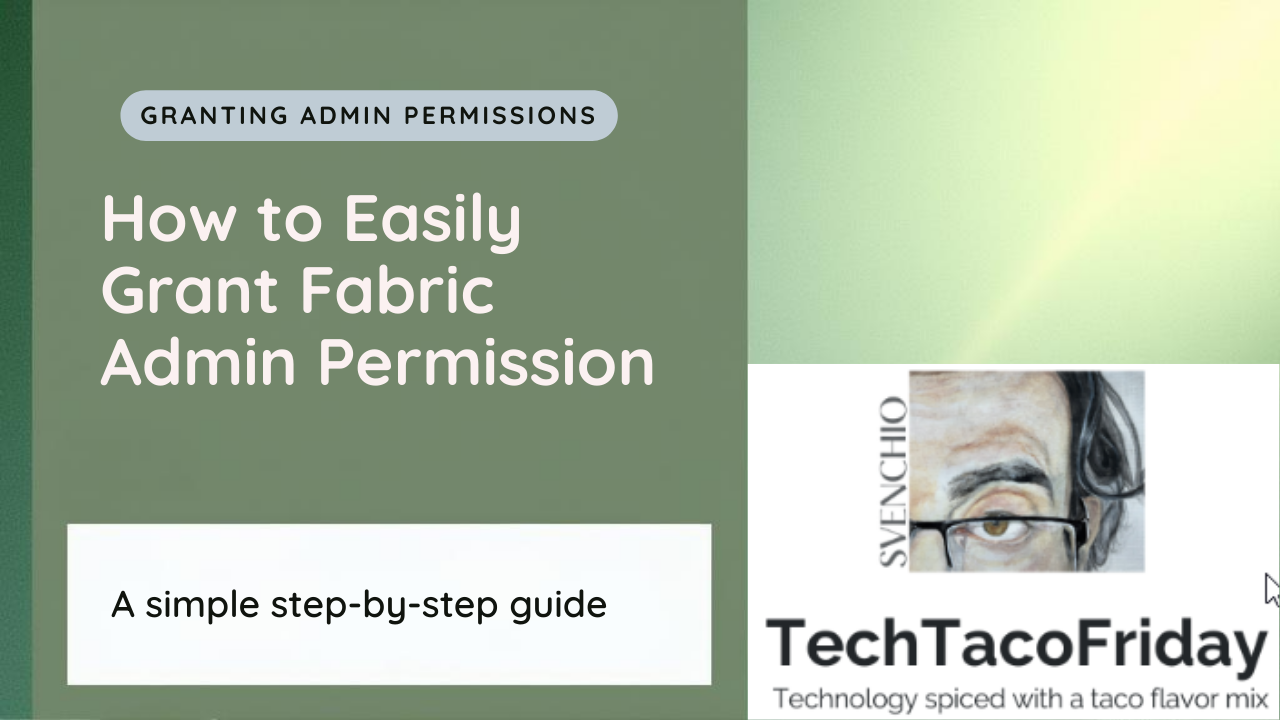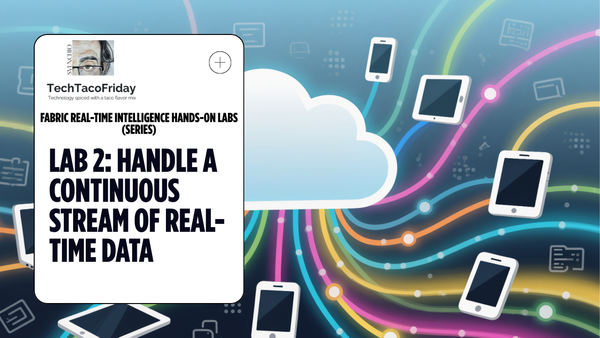Removing Orphan Fabric Deployment Pipelines
Learn how to remove orphan Fabric Deployment Pipelines step by step. From grabbing a token in your browser to using admin-scoped APIs in Postman, this guide shows how to reclaim access, reassign admins, and clean up workspaces.

Introduction
When working with Fabric, you might face a frustrating situation: an orphan Deployment Pipelines.
This happens when a pipeline was created without assigning admin rights to others, if the creator leaves the company or their account is deactivated, nobody can manage or delete that pipeline anymore, and it get even worse when there's a workspace assigned to any of its stages, because to delete a workspace, you first need to remove it from its pipeline 😬 ... If you don’t have admin access to the pipeline, you’re blocked 😒.
Many answers online simply say “use the Fabric Admin API”, without providing implementation details such as how to get an access token to interact with the API, which endpoints (Resource URI+HTTP method) to use, what permissions are required, etc., in this article, we’ll go step-by-step through the process and also explain how to interact with the Fabric Admin API 😉.
Setting the stage
Imagine you’re cleaning up workspaces in your tenant and you try to remove one that’s no longer needed, and you get the following error message...
This means that, the workspace is assigned to a stage within a deployment pipeline, like this ...

The good news is: you can fix this using the Fabric Admin API.
Pre-requisites
Before moving to the solution, make sure:
- Have Fabric Admin permissions - I created this quick article to assist you

- Have Postman ready to make API calls - Offers an API platform for developers to design, build, test, and collaborate on APIs
Solution
Before jumping in, let me point out something important: I could easily create a PowerShell script that automates this end-to-end — getting the token, calling the Fabric Admin API endpoints, cleaning up orphan pipelines. But in this article, I’m intentionally walking through the process manually. The goal is to help you see how the API works under the hood.
Step 1: Getting the Access Token
In this walkthrough we’ll use a signed‑in user account (not an app registration). I’ll grab the same token the browser uses when you’re in the Fabric portal and reuse it in Postman. This respects MFA and conditional access because you authenticate interactively in the browser first.
Go to https://app.fabric.microsoft.com (or your Fabric portal URL) and sign in with the user account that has Fabric Admin rights, using your Web browser of choice, open its Developer tools and then go to Console and type powerBIAccessToken

Copy the token (string), I use the option Copy string contents 1️⃣

Step 2. Configure Postman Authorization
Open the Postman application and create/select a collection and Add Request 1️⃣, click on the Auth tab 2️⃣, from the Auth Type 3️⃣ select option Bearer Token 4️⃣ and copy/paste the token generated previously 5️⃣

Step 3. Identify the orphan pipeline
Now that you’re authenticated, invoke the Admin - Pipelines GetPipelinesAsAdmin endpoint to find the orphan 1️⃣ and copy the Id of the pipeline we want to remove 2️⃣
GET
https://api.powerbi.com/v1.0/myorg/admin/pipelines
admin group. The Pipelines.GetPipelinesAsAdmin endpoint returns all pipelines in the tenant, regardless of current access. After identifying the orphaned pipelines, the Pipelines.UpdateUserAsAdmin endpoint allows you to reassign administrative access and reclaim control—ensuring no pipeline remains inaccessible. Step 3. Granting admin access to the pipeline
We need to grant ourselves admin access right to the pipeline first via another admin endpoint Admin - Pipelines UpdateUserAsAdmin
POST
https://api.powerbi.com/v1.0/myorg/admin/pipelines/{pipelineId}/usersAccording to the documentation, in this case, you need to provide the endpoint 1️⃣ and a Body 2️⃣ and 3 key/value pairs 3️⃣, after invoking the endpoint, make sure you receive a 200 OK response code 4️⃣.

Step 4. Removing the Pipeline
Now we have all the pieces of this puzzle, we can now proceed to remove the pipeline invoking Delete Deployment Pipeline
DELETE https://api.fabric.microsoft.com/v1/deploymentPipelines/{deploymentPipelineId}
Step 5: Cleaning Up Workspaces
Once the pipeline is gone, you can safely manage the workspace 😅
- Delete it if it’s no longer needed.
- Or reassign it to another pipeline
Conclusion
Orphan pipelines are a common byproduct of people leaving organizations without reassigning ownership. They block workspace clean-up, add clutter, and pose governance risks.
It’s also important to understand the distinction between core and admin‑scoped endpoints. While the core API shows only the pipelines you personally have access to, the admin group provides tenant‑wide visibility. Endpoints such as Pipelines.GetPipelinesAsAdmin let you see all deployment pipelines in your environment, even those with no active admins. From there, Pipelines.UpdateUserAsAdmin enables you to reassign administrative access, effectively reclaiming orphaned pipelines without needing to delete them.
In other words, using the admin‑scoped APIs not only solves the orphan pipeline issue but also gives administrators governance tools to ensure no pipeline remains inaccessible in the future.
Call to Action
👉 Would you like me to share a full automation script that scans and removes orphan pipelines in bulk using PowerShell? Drop me a comment and let me know!




